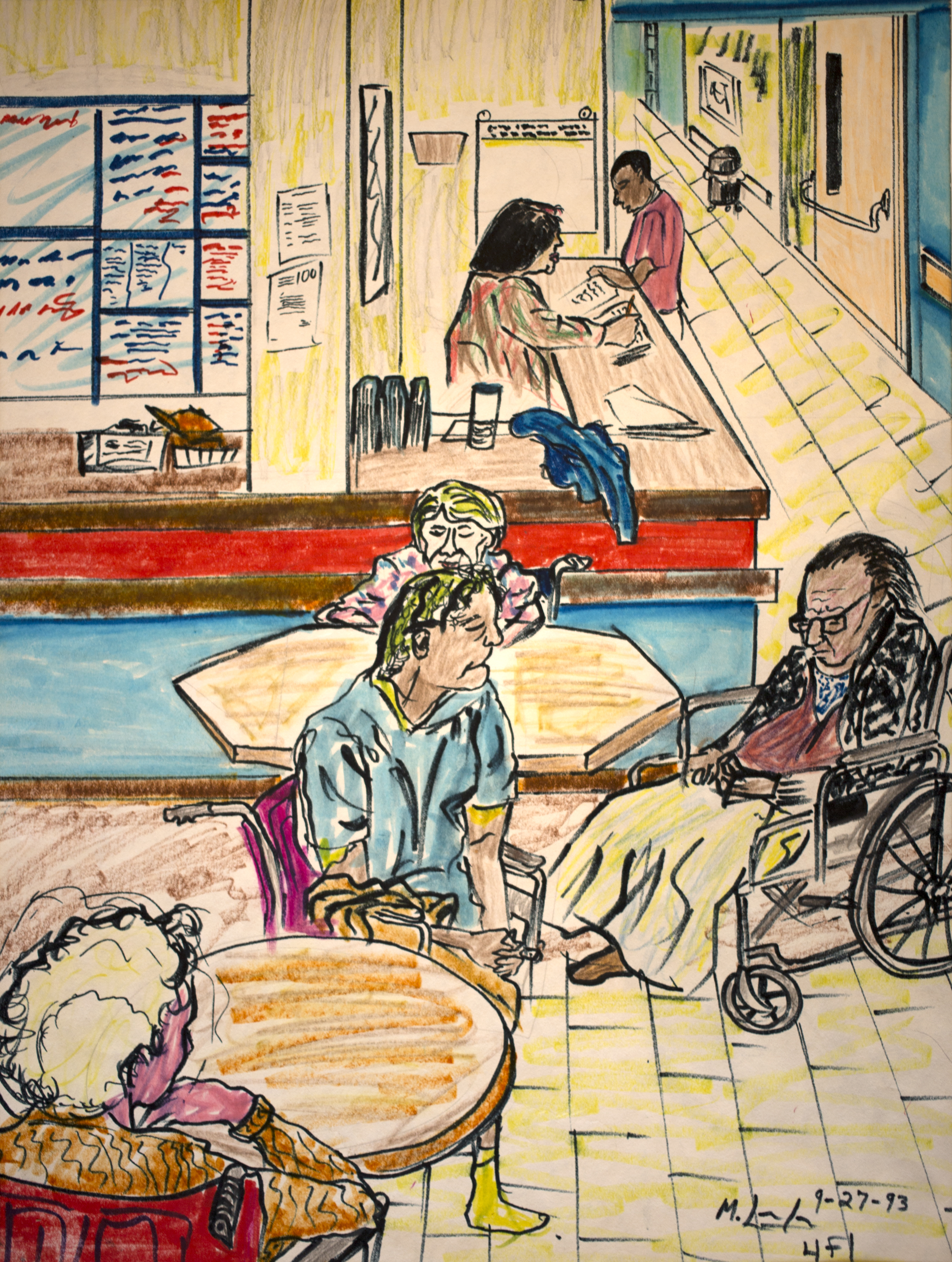4th Floor
1993
Ink on paper
23 3/4 x 18 in. (60.5 x 45.7 cm)
Collection of the Akron Art Museum
Gift of Fort Gansevoort Gallery
2024.13.2
More Information
Michelangelo Lovelace was never able to make a living solely through his art and, from his teenage years onward, he supported himself and his family through other work. In his youth, this meant hustling—carrying groceries, cutting grass, mopping basements, and eventually the drug dealing that got him arrested at age nineteen. He later worked as a dishwasher, a house painter, and a maintenance technician. In 1989, he received job training through a program called Cleveland Works and became a state-certified nursing assistant. This finally provided a fulfilling secondary career, and a steady income throughout the rest of his life, including nineteen years as part of Skill Rehabilitation Unit 6A at Metro Health Medical Center, up until his cancer diagnosis in 2020. Once Lovelace’s colleagues in nursing homes and hospitals learned of his artistic skills, he quickly began leading arts, crafts, and other activities. He also organized exhibitions of artwork made by residents and patients, and he shared his own portraits and other drawings, which he created whenever he had a spare moment at work. The artist described these pictures as the results of deep, special relationships: “Long before I had any recognition, these were the people who were encouraging me to take it there with my art and do what I do, so they became my subjects.”
Keywords
Nursing homewheel chairs
accessibility
hallways
inclusion

